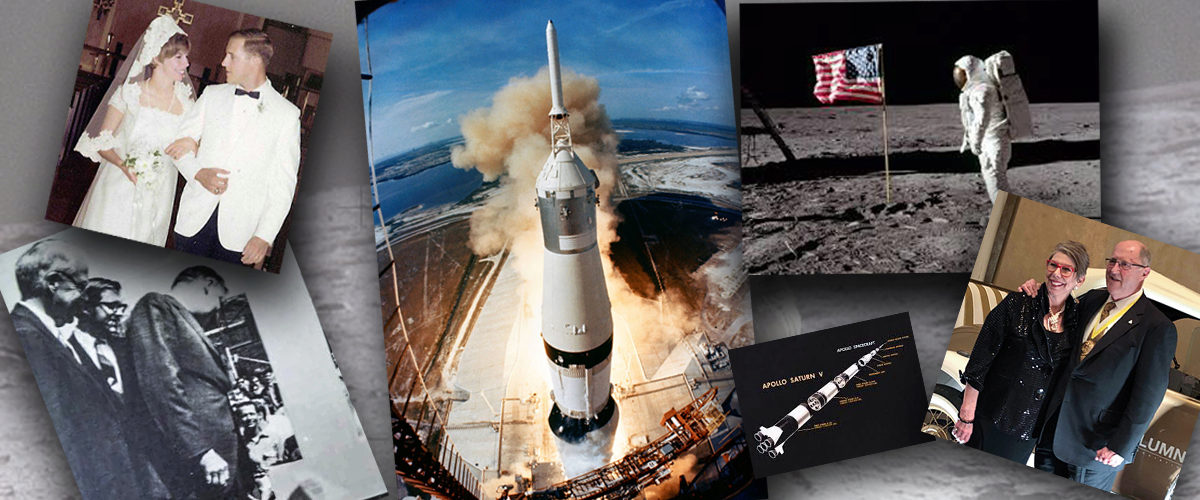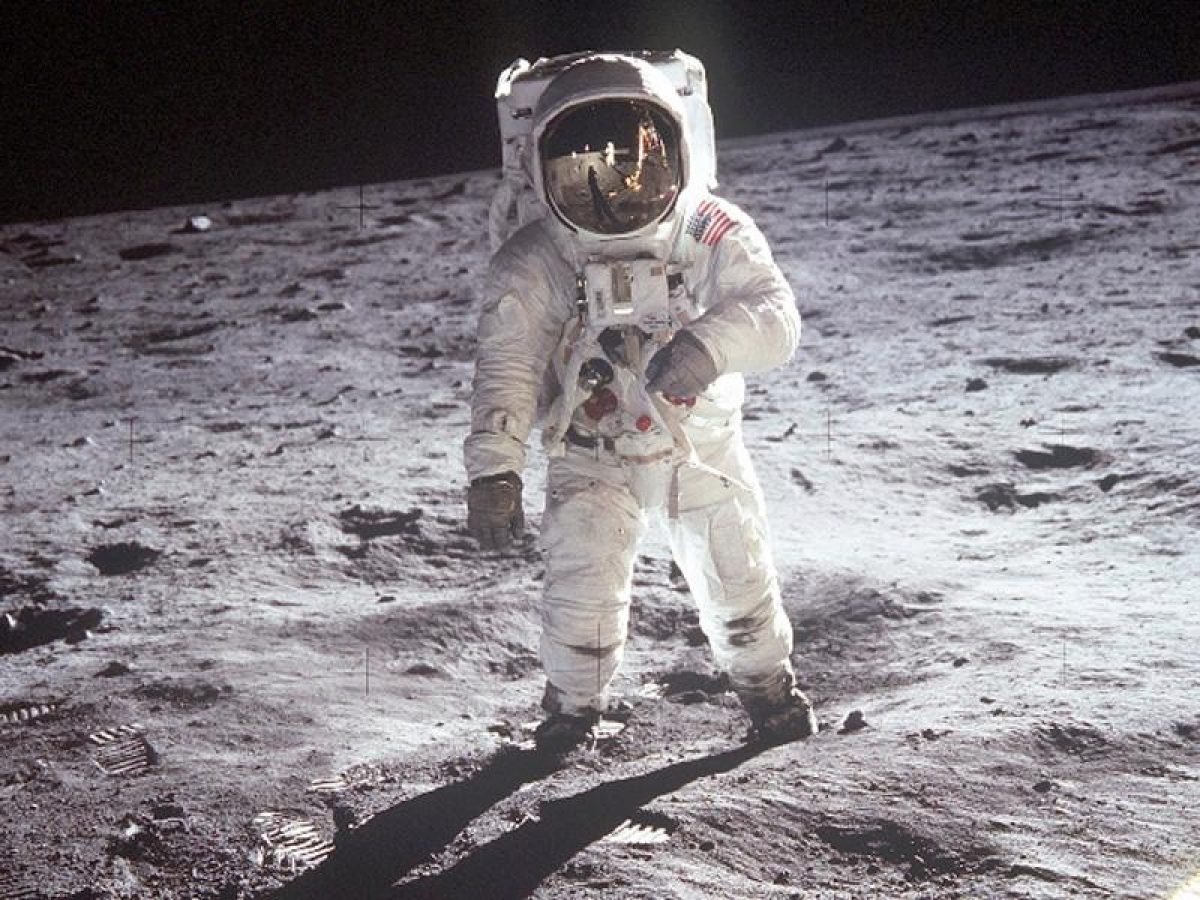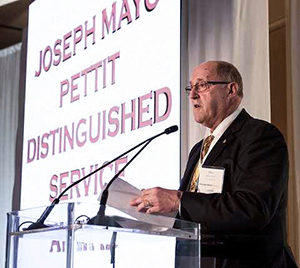 Sharing an Anniversary with History - Almost. Former NASA engineer Marc Dash, MSAE '68, and his wife Patricia vividly remember watching mankind's first steps on the lunar surface, July 20, 1969. But the longtime couple have history beat by one year: they were married in June of 1968 and remain so to this day. After 10 years at NASA, Marc Dash went on a hugely successful career in finance and even came back to Tech to teach. But nothing beats the thrill of contributing to history.
Sharing an Anniversary with History - Almost. Former NASA engineer Marc Dash, MSAE '68, and his wife Patricia vividly remember watching mankind's first steps on the lunar surface, July 20, 1969. But the longtime couple have history beat by one year: they were married in June of 1968 and remain so to this day. After 10 years at NASA, Marc Dash went on a hugely successful career in finance and even came back to Tech to teach. But nothing beats the thrill of contributing to history.
If you are lucky, you are old enough to remember the awe that swept the globe on July 20, 1969, when Apollo 11 astronauts Neil Armstrong and Buzz Aldrin first walked on the moon.
|
|
|
Marcus Dash, MSAE '68 |
If you are really lucky, you are Marc Dash, MSAE '68, a former NASA engineer who worked on that storied mission. Fifty years later, the now retired Goldman Sachs partner (and retired Georgia Tech adjunct professor) still talks about that night - and his 10-year stint at NASA - with unmitigated excitement.
"Everyone who worked at NASA at that time knew what the mission was - we'd all heard President Kennedy's challenge - and we knew we were working on cutting-edge technologies to make it happen," said Dash, who helped design and build Apollo's Saturn V rocket and went on to work on the design of the Space Shuttle.
"No one was repeating what had been done before because it hadn't been done before. There was no textbook for building a rocket that was that large, that would go that fast or that far. So the science was happening at the same time as the engineering, and we saw it as our challenge, as NASA engineers, to make it work."
If that sounds a little more swashbuckling than safe, Dash is quick to remind his listeners:
"When I was involved in the Space Program, crew safety was paramount. Everything was done with that in mind. But what people today don't understand about NASA in the 60s is that it was a young agency that was full of young, ambitious engineers on a mission. The only way I can describe it is that it was like Silicon Valley is today. We were serious about our work, but were also 100 percent aware that we were doing work that was changing the world."
The uber-powerful Saturn V rocket that Dash helped to design and build was a three-stage heavy lift launch vehicle -- the largest ever built. At 6.2 million pounds and 36 stories tall, it was capable of launching as many as 50 tons into earth orbit. (Only 2,000-3,000 pounds would later return from the moon.) The design was used in launch vehicles for 13 different NASA missions, from 1967 until 1973.
"My group was responsible for determining how hot the base area - where the engines are - would get during ascent," he explained.
Celebrate History |
|
The Georgia Space Grant Consortium has put together a great list of events to help everyone celebrate the July 20 anniversary of the Apollo 11 moon landing. Check out the GSGC's Apollo 11 Celebration page now.
If you'd rather celebrate the anniversary from your livingroom, consider tuning in to Georgia Public Broadcasting (GPB) where their 3-part series Chasing the Moon will treat you to great video footage that will transport you back in time. Get comfortable, because you'll want to view all three segments. Chasing the Moon is a part of a larger series of GPB-produced videos, GPB to the Moon, which also includes a special segment called "Future Moon Exploration." Tune into this segment and you'll hear Georgia Tech's own Thomas Orlando, the director of the Center for Space Technology And Research (CSTAR) talk about how Tech is contributing to the next generation of space explorations. Also this week, GPB to the Moon will feature AE associate school chair Stephen Ruffin (director of the GSGC) and AE doctoral student, Olatunde Sanni in this segment, "Generations to Come." And, finally, the Journal of Spacecraft and Rockets is offering free access to 50 Papers for 50 Years, academic papers that span a range of technical topics, time periods, and historical perspectives, including pre-Apollo work and events, ground-support development, communication, landing-on-Earth challenges, flight simulations for astronauts, support for human flight, launch-vehicle design, flight-control development, orbital dynamics, reentry flight dynamics, science, and historical perspectives. |
"Typical of cutting-edge engineering, we found out that there might be a problem after a few [unmanned] rockets exploded during powered ascent. When trying to find out why, we discovered that the exhaust gases from the engines were being sucked back into the base area during flight. That was bad because that was where a whole lot of pumps and pipes carrying highly explosive fuel were located. So then it became a question of weight. We obviously had to insulate the area, but how much insulation did we really need? Given the potential for catastrophic failure, we wanted to be safe. But every pound mattered."
Dash's enthusiasm is audibly tamped down when he turns to the failures that presaged that spectacular success. He is ever respectful of the lessons that were learned by astronauts before and since.
"I was at NASA in 1967 when the Apollo 1 ground test fire killed the entire crew - the only flight related deaths in the entire program - and I can tell you that the entire organization took it personally," he said.
"We had a memorial service at Marshall for them, and people were crying. Everyone knew who the astronauts were - even if you didn't personally know them. You'd see them fly in and out of Marshall on their T38 jets. They were central to what we were all doing."
Now retired from a career in finance, Marcus Dash started out harboring the same astronaut dreams that bring many to Georgia Tech. And he did all the right things to make them come true. As an undergraduate and a graduate student in the Georgia Tech Aerospace Engineering School, he completed multiple co-ops at NASA Marshall between 1962 and 1970. Then, as he was working on his doctoral thesis, some nagging curiosities got to him.
"My dissertation proposal had been accepted, but I had been involved in student government at Tech - I was president of the graduate student body -- and it got me thinking that I might want to consider other activities," he said.
"Before I decided to change careers entirely, I decided to try going back to NASA Marshall and work full time for two years. After the first year, I knew what I wanted to do. I applied to one business school - Harvard - and that's where I went."
Dash brushes off surprised reactions.
"In those days, there was a pipeline of Tech graduates who went to Harvard. I wasn't the only one," he said.
"And I went into finance because it is about numbers and judgments, just like engineering. In engineering, as in finance, you use equations that predict what will happen when the rocket flies in the future. In finance, you produce models to show investors that their investment will be safe," he explained.
Though he had moved on to the Space Shuttle systems design by the time Apollo 11 launched, Marcus Dash -- and his still newlywed wife, Patty -- were as entranced by the spectacle of that July 20 evening as the 600 million people who watched it around the globe.
"I remember watching the first step on the moon with Patty on television with two friends in our apartment in Atlanta. No matter who you were or where you were, it was a moment of immense pride. As an engineer who worked on Apollo 11, I was given a medallion - made from metal that went to the moon on that mission - to commemorate it, but, really, I share that memory with the world. A giant leap for mankind, for sure."

